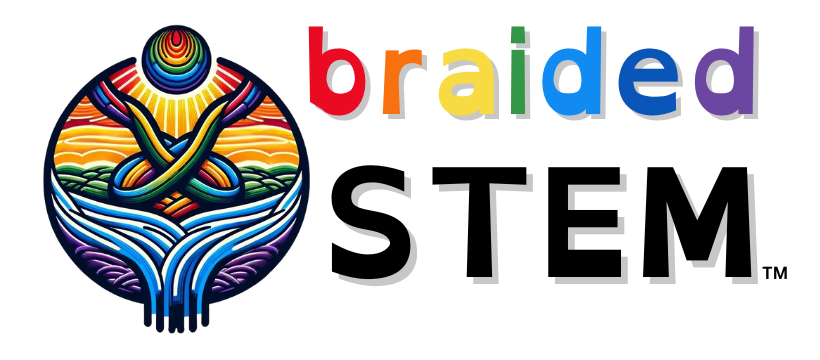6th Grade AzSS-Aligned Resources
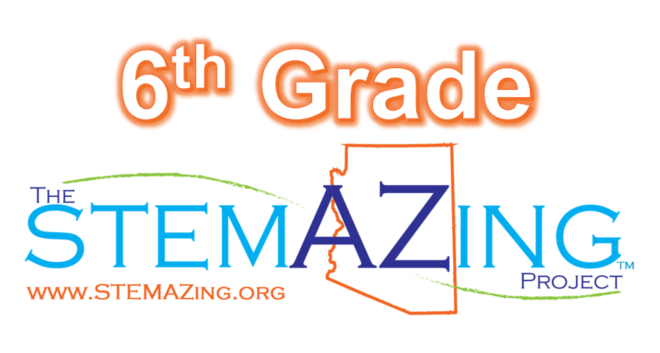
Lessons, videos, storylines, phenomena, and more all curated by The STEMAZing Project to link directly to Arizona Science Standards.
- 6.P1U1.1 (NGSS-P: MS-PS1-4) Analyze and interpret data to show that changes in states of matter are caused by different rates of movement of atoms in solids, liquids, and gases (Kinetic Theory).
- 6.P1U1.2 (NGSS-P: MS-PS1-4) Plan and carry out an investigation to demonstrate that variations in temperature and/or pressure affect changes in state of matter.
- 6.P1U1.3 (NGSS-S: MS-PS1-1) Develop and use models to represent that matter is made up of smaller particles called atoms.
- 6.P2U1.4 (NGSS-P: MS-PS2-5) Develop and use a model to predict how forces act on objects at a distance.
- 6.P4U2.5 (NGSS-NC) Analyze how humans use technology to store (potential) and/or use (kinetic) energy.
- 6.E1U1.6 (NGSS-P: MS-ESS2-6) Investigate and construct an explanation demonstrating that radiation from the Sun provides energy and is absorbed to warm the Earth’s surface and atmosphere.
- 6.E2U1.7 (NGSS-S: MS-ESS1-3) Use ratios and proportions to analyze and interpret data related to scale, properties, and relationships among objects in our solar system.
- 6.E2U1.8 (NGSS-NC) Develop and use models to explain how constellations and other night sky patterns appear to move due to Earth’s rotation and revolution.
- 6.E2U1.9 (NGSS-S: MS-ESS1-1) Develop and use models to construct an explanation of how eclipses, moon phases, and tides occur within the Sun-Earth-Moon system.
- 6.E2U1.10 (NGSS-S: MS-ESS1-1) Use a model to show how the tilt of Earth’s axis causes variations in the length of the day and gives rise to seasons.
- 6.L2U3.11 (NGSS-P: MS-LS2-4) Use evidence to construct an argument regarding the impact of human activities on the environment and how they positively and negatively affect the competition for energy and resources in ecosystems.
- 6.L2U3.12 (NGSS-P: MS-LS4-5) Engage in argument from evidence to support a claim about the factors that cause species to change and how humans can impact those factors.
- 6.L2U1.13 (NGSS-P: MS-LS2-1) Develop and use models to demonstrate the interdependence of organisms and their environment including biotic and abiotic factors.
- 6.L2U1.14 (NGSS-S: MS-LS2-3) Construct a model that shows the cycling of matter and flow of energy in ecosystems.
- Other 6th Grade Resources
6.P1U1.1 (NGSS-P: MS-PS1-4) Analyze and interpret data to show that changes in states of matter are caused by different rates of movement of atoms in solids, liquids, and gases (Kinetic Theory).
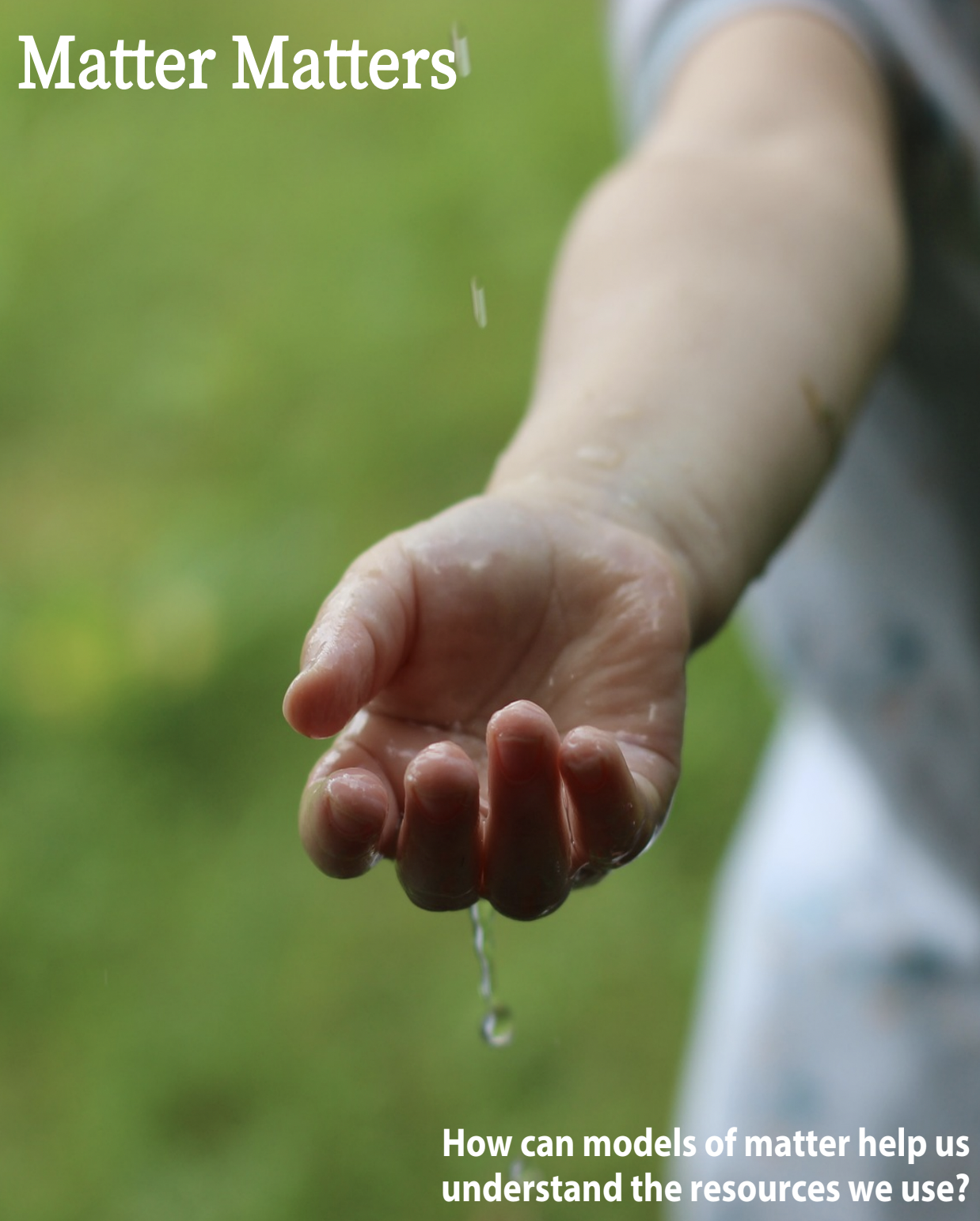
Matter Matters – Stanford SCALE Curriculum
How can models of matter help us understand the resources we use? This integrated science unit is part of the Stanford NGSS Integrated Science Curriculum. For Arizona teachers, this unit best aligns with some of ...

Matter Matters – Stanford SCALE Curriculum
How can models of matter help us understand the resources we use? This integrated science unit is part of the Stanford NGSS Integrated Science Curriculum. For Arizona teachers, this unit best aligns with some of ...
6.P1U1.2 (NGSS-P: MS-PS1-4) Plan and carry out an investigation to demonstrate that variations in temperature and/or pressure affect changes in state of matter.

Matter Matters – Stanford SCALE Curriculum
How can models of matter help us understand the resources we use? This integrated science unit is part of the Stanford NGSS Integrated Science Curriculum. For Arizona teachers, this unit best aligns with some of ...

Matter Matters – Stanford SCALE Curriculum
How can models of matter help us understand the resources we use? This integrated science unit is part of the Stanford NGSS Integrated Science Curriculum. For Arizona teachers, this unit best aligns with some of ...
6.P1U1.3 (NGSS-S: MS-PS1-1) Develop and use models to represent that matter is made up of smaller particles called atoms.

Matter Matters – Stanford SCALE Curriculum
How can models of matter help us understand the resources we use? This integrated science unit is part of the Stanford NGSS Integrated Science Curriculum. For Arizona teachers, this unit best aligns with some of ...

Matter Matters – Stanford SCALE Curriculum
How can models of matter help us understand the resources we use? This integrated science unit is part of the Stanford NGSS Integrated Science Curriculum. For Arizona teachers, this unit best aligns with some of ...
6.P2U1.4 (NGSS-P: MS-PS2-5) Develop and use a model to predict how forces act on objects at a distance.
Moon Phases, Tides, Eclipses, and the Solar System: A 6th Grade Earth and Space Science Unit from ASTA Deeper Dive
This unit bundles together standards 6.P2U1.4, 6.E2U1.7, and 6.E2U1.9. Link to Tool 4 Unit Sequence for 6th Grade Earth and Space Science Unit Link to video walkthrough of 6th Grade Earth and Space Science Unit ...
Moon Phases, Tides, Eclipses, and the Solar System: A 6th Grade Earth and Space Science Unit from ASTA Deeper Dive
This unit bundles together standards 6.P2U1.4, 6.E2U1.7, and 6.E2U1.9. Link to Tool 4 Unit Sequence for 6th Grade Earth and Space Science Unit Link to video walkthrough of 6th Grade Earth and Space Science Unit ...
6.P4U2.5 (NGSS-NC) Analyze how humans use technology to store (potential) and/or use (kinetic) energy.
No posts found.
No posts found.
6.E1U1.6 (NGSS-P: MS-ESS2-6) Investigate and construct an explanation demonstrating that radiation from the Sun provides energy and is absorbed to warm the Earth’s surface and atmosphere.
No posts found.
No posts found.
6.E2U1.7 (NGSS-S: MS-ESS1-3) Use ratios and proportions to analyze and interpret data related to scale, properties, and relationships among objects in our solar system.
Moon Phases, Tides, Eclipses, and the Solar System: A 6th Grade Earth and Space Science Unit from ASTA Deeper Dive
This unit bundles together standards 6.P2U1.4, 6.E2U1.7, and 6.E2U1.9. Link to Tool 4 Unit Sequence for 6th Grade Earth and Space Science Unit Link to video walkthrough of 6th Grade Earth and Space Science Unit ...
Moon Phases, Tides, Eclipses, and the Solar System: A 6th Grade Earth and Space Science Unit from ASTA Deeper Dive
This unit bundles together standards 6.P2U1.4, 6.E2U1.7, and 6.E2U1.9. Link to Tool 4 Unit Sequence for 6th Grade Earth and Space Science Unit Link to video walkthrough of 6th Grade Earth and Space Science Unit ...
6.E2U1.8 (NGSS-NC) Develop and use models to explain how constellations and other night sky patterns appear to move due to Earth’s rotation and revolution.
No posts found.
No posts found.
6.E2U1.9 (NGSS-S: MS-ESS1-1) Develop and use models to construct an explanation of how eclipses, moon phases, and tides occur within the Sun-Earth-Moon system.
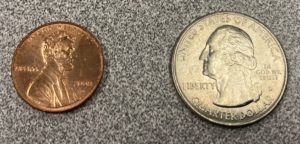
A Penny for Your Moon and a Quarter for Your Earth
Learning Objectives Children will… • demonstrate the motion of the Moon’s rotation. • demonstrate that the Moon keeps the same face toward Earth. Key Question Does the Moon rotate or turn on its axis? Materials ...
Moon Phases, Tides, Eclipses, and the Solar System: A 6th Grade Earth and Space Science Unit from ASTA Deeper Dive
This unit bundles together standards 6.P2U1.4, 6.E2U1.7, and 6.E2U1.9. Link to Tool 4 Unit Sequence for 6th Grade Earth and Space Science Unit Link to video walkthrough of 6th Grade Earth and Space Science Unit ...
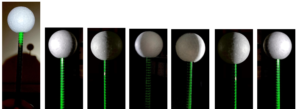
Phases of the Moon
Learning Objectives Children will… • become part of a model to demonstrate the phases of the moon. • match the phase of the moon they see using the model to phase of the moon cards ...
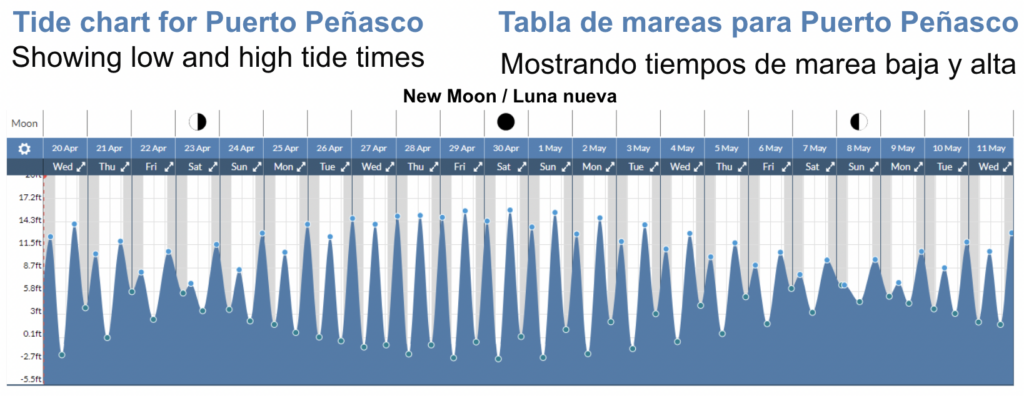
Slow Reveal Graph: How do the phases of the moon impact tides?
This slow reveal graph has been designed specifically to start to address the 6th grade 6.E2U1.9 Arizona Science Standard. Google Slide Deck for Teachers (without question prompts on slides, includes teacher notes) Google Slide Deck ...

A Penny for Your Moon and a Quarter for Your Earth
Learning Objectives Children will… • demonstrate the motion of the Moon’s rotation. • demonstrate that the Moon keeps the same face toward Earth. Key Question Does the Moon rotate or turn on its axis? Materials ...
Moon Phases, Tides, Eclipses, and the Solar System: A 6th Grade Earth and Space Science Unit from ASTA Deeper Dive
This unit bundles together standards 6.P2U1.4, 6.E2U1.7, and 6.E2U1.9. Link to Tool 4 Unit Sequence for 6th Grade Earth and Space Science Unit Link to video walkthrough of 6th Grade Earth and Space Science Unit ...

Phases of the Moon
Learning Objectives Children will… • become part of a model to demonstrate the phases of the moon. • match the phase of the moon they see using the model to phase of the moon cards ...

Slow Reveal Graph: How do the phases of the moon impact tides?
This slow reveal graph has been designed specifically to start to address the 6th grade 6.E2U1.9 Arizona Science Standard. Google Slide Deck for Teachers (without question prompts on slides, includes teacher notes) Google Slide Deck ...
6.E2U1.10 (NGSS-S: MS-ESS1-1) Use a model to show how the tilt of Earth’s axis causes variations in the length of the day and gives rise to seasons.
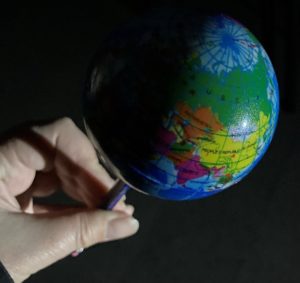
Time Flies: Day, Night, Week, Month, Year
Learning Objectives Children will… • create a model of Earth rotating on its axis. • use the model to demonstrate a day and a week by making the model Earth rotate. • use the model ...

Time Flies: Day, Night, Week, Month, Year
Learning Objectives Children will… • create a model of Earth rotating on its axis. • use the model to demonstrate a day and a week by making the model Earth rotate. • use the model ...
6.L2U3.11 (NGSS-P: MS-LS2-4) Use evidence to construct an argument regarding the impact of human activities on the environment and how they positively and negatively affect the competition for energy and resources in ecosystems.
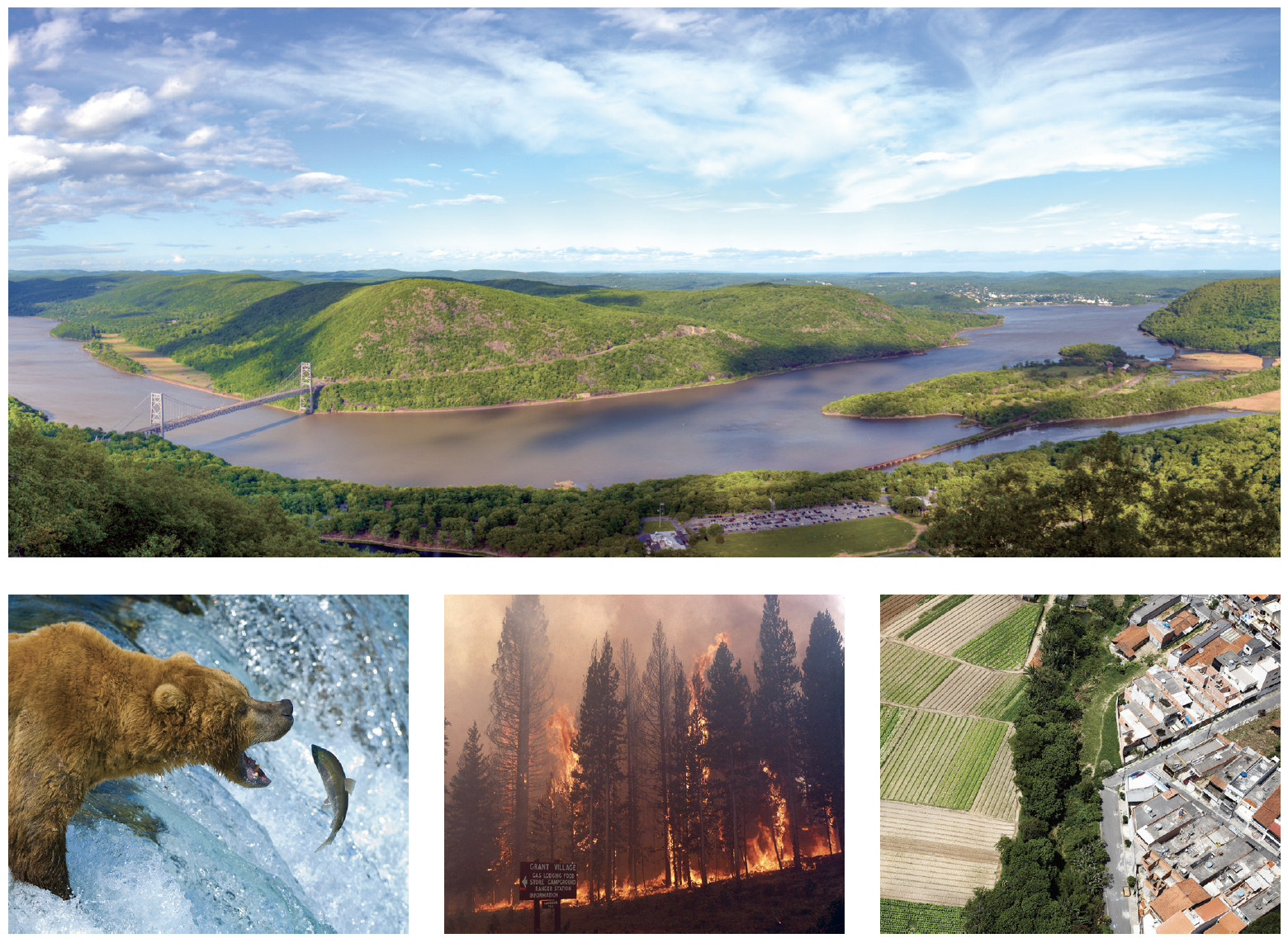
Disruptions in Ecosystems from American Museum of Natural History
This middle school unit was designed to support the middle school NGSS related to Ecosystems: Interactions, Energy, and Dynamics integrated with elements of related Earth science NGSS (Human Impact). The unit includes five chapters, each ...
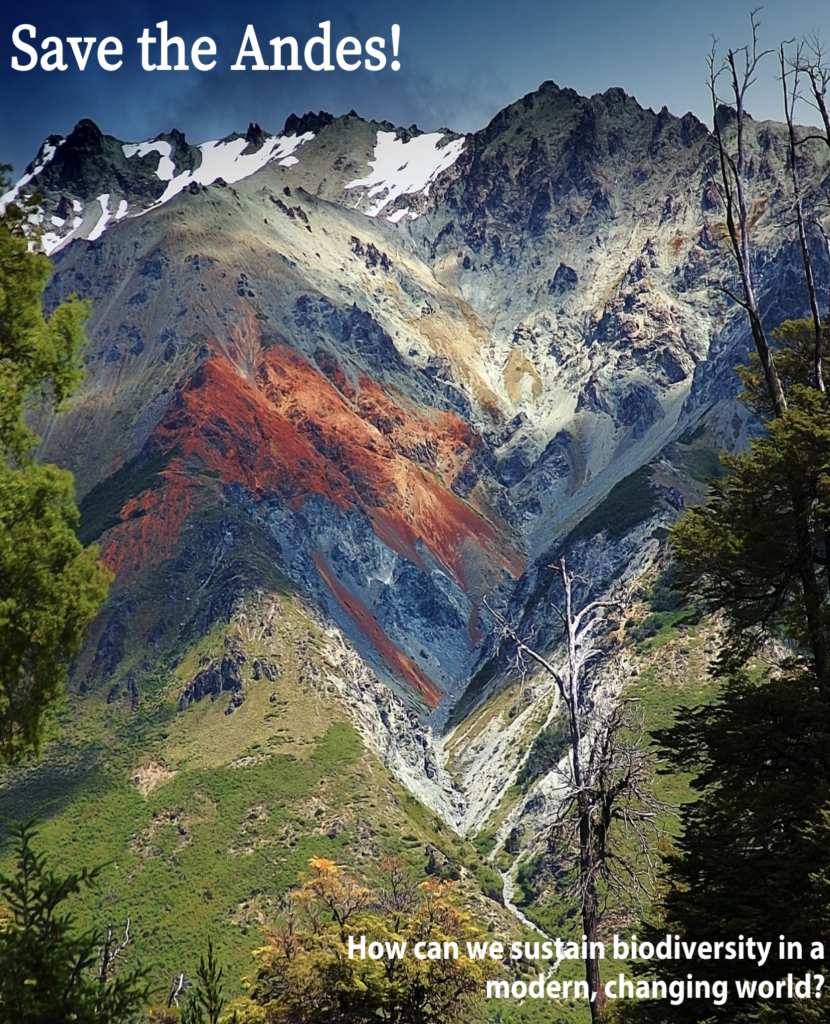
Save the Andes! – Stanford SCALE Curriculum
How can we sustain biodiversity in a modern, changing world? This integrated science unit is part of the Stanford NGSS Integrated Science Curriculum. For Arizona teachers, this unit best aligns with some of our 6th ...

Youth Climate Action Toolkit
This Is Planet Ed partnered with The Nature Conservancy to design this toolkit with young leaders from across the country to share climate solutions that students can advocate for in schools. The Youth Climate Action ...

Disruptions in Ecosystems from American Museum of Natural History
This middle school unit was designed to support the middle school NGSS related to Ecosystems: Interactions, Energy, and Dynamics integrated with elements of related Earth science NGSS (Human Impact). The unit includes five chapters, each ...

Save the Andes! – Stanford SCALE Curriculum
How can we sustain biodiversity in a modern, changing world? This integrated science unit is part of the Stanford NGSS Integrated Science Curriculum. For Arizona teachers, this unit best aligns with some of our 6th ...

Youth Climate Action Toolkit
This Is Planet Ed partnered with The Nature Conservancy to design this toolkit with young leaders from across the country to share climate solutions that students can advocate for in schools. The Youth Climate Action ...
6.L2U3.12 (NGSS-P: MS-LS4-5) Engage in argument from evidence to support a claim about the factors that cause species to change and how humans can impact those factors.
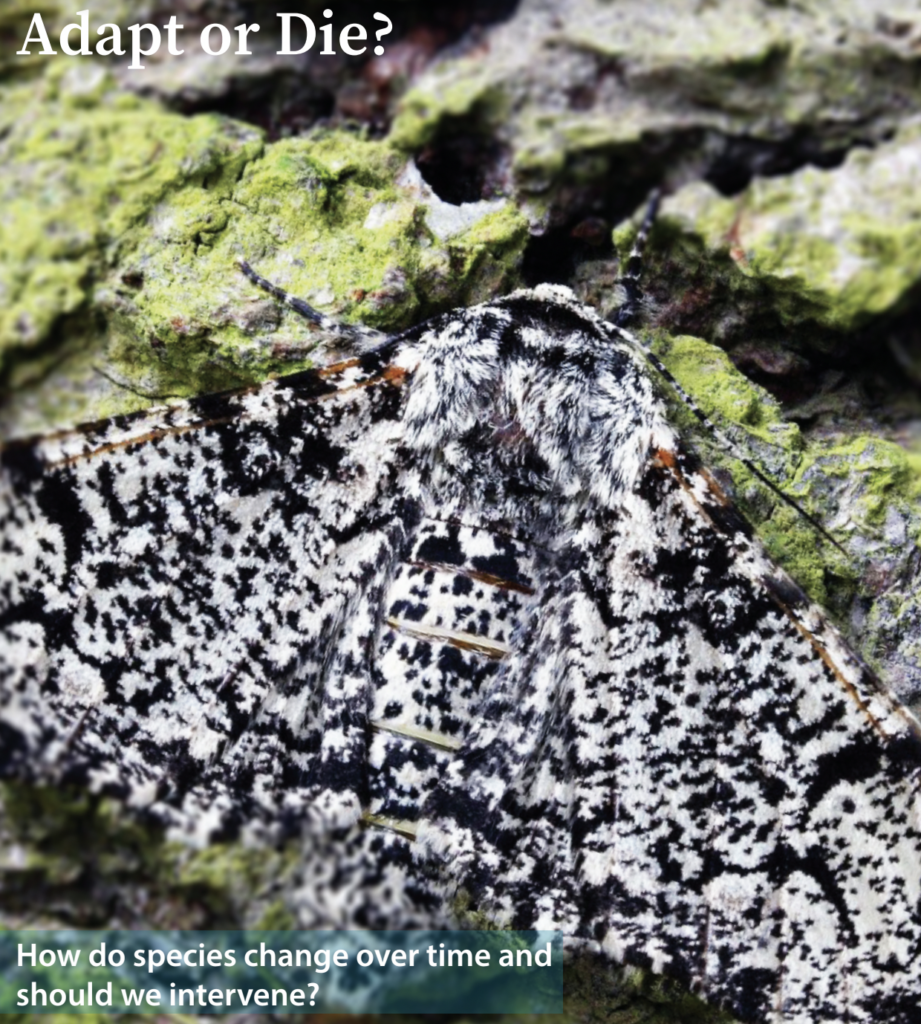
Adapt or Die? – Stanford SCALE Curriculum
How do species change over time and should we intervene? This integrated science unit is part of the Stanford NGSS Integrated Science Curriculum. For Arizona teachers, this unit best aligns with some of our 6th ...

Disruptions in Ecosystems from American Museum of Natural History
This middle school unit was designed to support the middle school NGSS related to Ecosystems: Interactions, Energy, and Dynamics integrated with elements of related Earth science NGSS (Human Impact). The unit includes five chapters, each ...

Youth Climate Action Toolkit
This Is Planet Ed partnered with The Nature Conservancy to design this toolkit with young leaders from across the country to share climate solutions that students can advocate for in schools. The Youth Climate Action ...

Adapt or Die? – Stanford SCALE Curriculum
How do species change over time and should we intervene? This integrated science unit is part of the Stanford NGSS Integrated Science Curriculum. For Arizona teachers, this unit best aligns with some of our 6th ...

Disruptions in Ecosystems from American Museum of Natural History
This middle school unit was designed to support the middle school NGSS related to Ecosystems: Interactions, Energy, and Dynamics integrated with elements of related Earth science NGSS (Human Impact). The unit includes five chapters, each ...

Youth Climate Action Toolkit
This Is Planet Ed partnered with The Nature Conservancy to design this toolkit with young leaders from across the country to share climate solutions that students can advocate for in schools. The Youth Climate Action ...
6.L2U1.13 (NGSS-P: MS-LS2-1) Develop and use models to demonstrate the interdependence of organisms and their environment including biotic and abiotic factors.
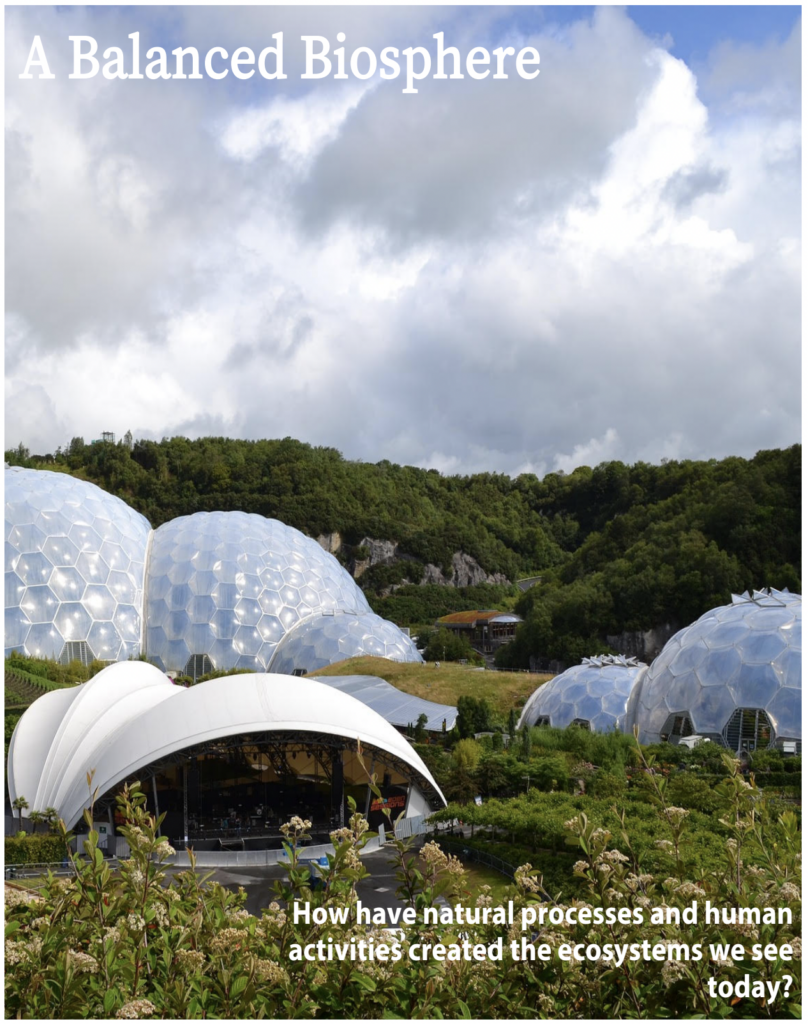
A Balanced Biosphere – Stanford SCALE Curriculum
How have natural processes and human activities created the ecosystem we see today? This integrated science unit is part of the Stanford NGSS Integrated Science Curriculum. For Arizona teachers, this unit best aligns with some ...
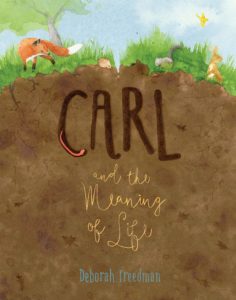
Carl and the Meaning of Life by Deborah Freedman (author and illustrator)
A story about finding your place in the world. Carl is an earthworm. He spends his days happily tunneling in the soil until a field mouse asks him a simple question that stops him short: ...

Disruptions in Ecosystems from American Museum of Natural History
This middle school unit was designed to support the middle school NGSS related to Ecosystems: Interactions, Energy, and Dynamics integrated with elements of related Earth science NGSS (Human Impact). The unit includes five chapters, each ...

Matter Matters – Stanford SCALE Curriculum
How can models of matter help us understand the resources we use? This integrated science unit is part of the Stanford NGSS Integrated Science Curriculum. For Arizona teachers, this unit best aligns with some of ...

Youth Climate Action Toolkit
This Is Planet Ed partnered with The Nature Conservancy to design this toolkit with young leaders from across the country to share climate solutions that students can advocate for in schools. The Youth Climate Action ...

A Balanced Biosphere – Stanford SCALE Curriculum
How have natural processes and human activities created the ecosystem we see today? This integrated science unit is part of the Stanford NGSS Integrated Science Curriculum. For Arizona teachers, this unit best aligns with some ...

Carl and the Meaning of Life by Deborah Freedman (author and illustrator)
A story about finding your place in the world. Carl is an earthworm. He spends his days happily tunneling in the soil until a field mouse asks him a simple question that stops him short: ...

Disruptions in Ecosystems from American Museum of Natural History
This middle school unit was designed to support the middle school NGSS related to Ecosystems: Interactions, Energy, and Dynamics integrated with elements of related Earth science NGSS (Human Impact). The unit includes five chapters, each ...

Matter Matters – Stanford SCALE Curriculum
How can models of matter help us understand the resources we use? This integrated science unit is part of the Stanford NGSS Integrated Science Curriculum. For Arizona teachers, this unit best aligns with some of ...

Youth Climate Action Toolkit
This Is Planet Ed partnered with The Nature Conservancy to design this toolkit with young leaders from across the country to share climate solutions that students can advocate for in schools. The Youth Climate Action ...
6.L2U1.14 (NGSS-S: MS-LS2-3) Construct a model that shows the cycling of matter and flow of energy in ecosystems.

A Balanced Biosphere – Stanford SCALE Curriculum
How have natural processes and human activities created the ecosystem we see today? This integrated science unit is part of the Stanford NGSS Integrated Science Curriculum. For Arizona teachers, this unit best aligns with some ...

Disruptions in Ecosystems from American Museum of Natural History
This middle school unit was designed to support the middle school NGSS related to Ecosystems: Interactions, Energy, and Dynamics integrated with elements of related Earth science NGSS (Human Impact). The unit includes five chapters, each ...

Photosynthetic Floatation – Science Snack from the Exploratorium
Photosynthetic organisms capture energy from the sun and matter from the air to make the food we eat, while also producing the oxygen we breathe. In this Snack, oxygen produced during photosynthesis makes leaf bits ...

Youth Climate Action Toolkit
This Is Planet Ed partnered with The Nature Conservancy to design this toolkit with young leaders from across the country to share climate solutions that students can advocate for in schools. The Youth Climate Action ...

A Balanced Biosphere – Stanford SCALE Curriculum
How have natural processes and human activities created the ecosystem we see today? This integrated science unit is part of the Stanford NGSS Integrated Science Curriculum. For Arizona teachers, this unit best aligns with some ...

Disruptions in Ecosystems from American Museum of Natural History
This middle school unit was designed to support the middle school NGSS related to Ecosystems: Interactions, Energy, and Dynamics integrated with elements of related Earth science NGSS (Human Impact). The unit includes five chapters, each ...

Photosynthetic Floatation – Science Snack from the Exploratorium
Photosynthetic organisms capture energy from the sun and matter from the air to make the food we eat, while also producing the oxygen we breathe. In this Snack, oxygen produced during photosynthesis makes leaf bits ...

Youth Climate Action Toolkit
This Is Planet Ed partnered with The Nature Conservancy to design this toolkit with young leaders from across the country to share climate solutions that students can advocate for in schools. The Youth Climate Action ...
Other 6th grade Resources

6th Grade AzSS vs NGSS Planning Guide
Great for cross-referencing the Arizona Science Standards to the Next Generation Science Standards (NGSS) when looking for resources from collections aligned to NGSS. S = strong alignment (same science and engineering practice, same content). P ...
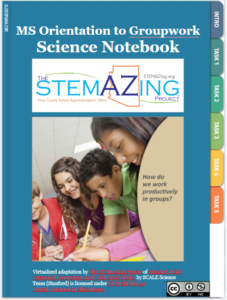
Middle School Virtual Orientation to Groupwork Unit
This virtualized version of the Stanford SCALE Science Unit 0 - Orientation to Groupwork for 6th grade. was co-designed by Melissa Wilburn (6th grade STEMAZing Teacher Leader with the Marana Unified School District), Sherrie Dennis ...

6th Grade AzSS vs NGSS Planning Guide
Great for cross-referencing the Arizona Science Standards to the Next Generation Science Standards (NGSS) when looking for resources from collections aligned to NGSS. S = strong alignment (same science and engineering practice, same content). P ...

Middle School Virtual Orientation to Groupwork Unit
This virtualized version of the Stanford SCALE Science Unit 0 - Orientation to Groupwork for 6th grade. was co-designed by Melissa Wilburn (6th grade STEMAZing Teacher Leader with the Marana Unified School District), Sherrie Dennis ...
